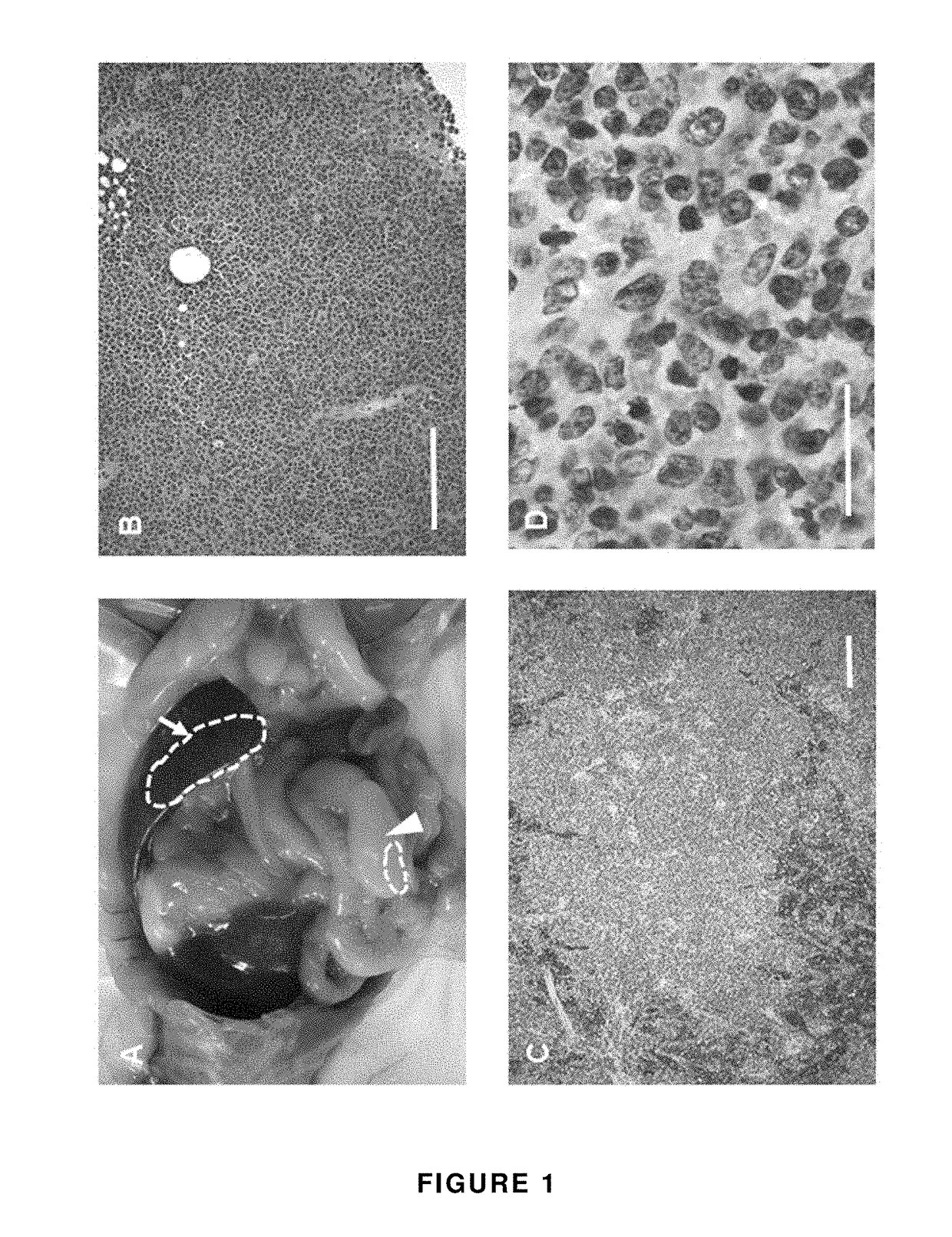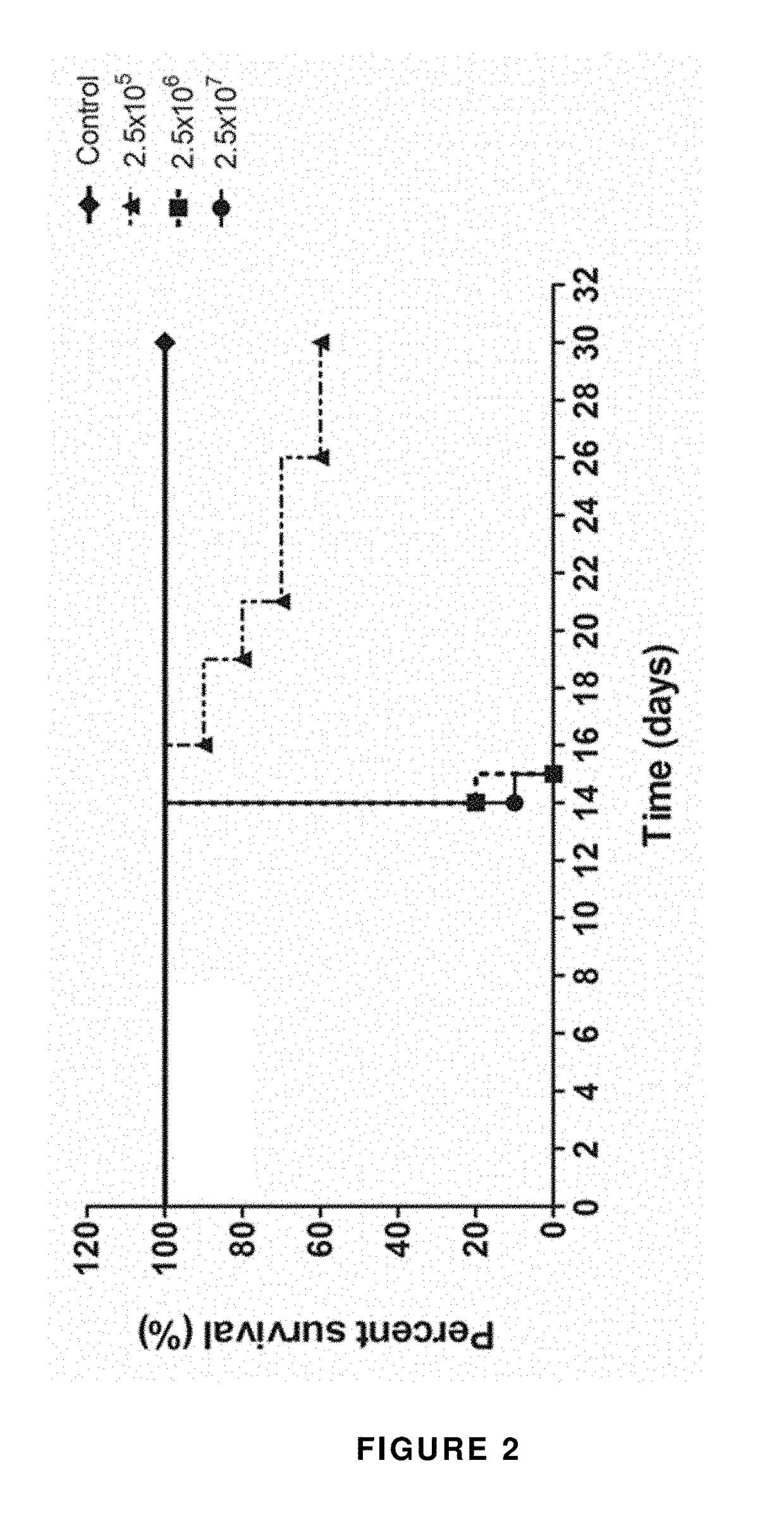Mouse lymphoma cell line and animal model of human high grade b-cell lymphoma
- Summary
- Abstract
- Description
- Claims
- Application Information
AI Technical Summary
Benefits of technology
Problems solved by technology
Method used
Image
Examples
examples
Materials and Methods
Mice
[0096]Inbred BALB / c and Rag1− / − [10] mice were originally purchased from Jackson Laboratory, and were maintained under SPF conditions at the Department of Immunology and Biotechnology under permits BAI / 01 / 1390-003 / 2013 (issued by the Baranya County Government Office) and SF / 688-18 / 2013 and SF / 27-1 / 2014 (issued by the Ministry of Agriculture). After their retrieval from the SPF unit the mice were kept under clean conditions with 12 hours of light / dark cycles and were provided with water and pelleted food ad libitum.
Lymphoma Cell Isolation and Passage
[0097]The original tumor was mechanically dispersed using a 70 μm cell strainer (BD Biosciences, Soft Flow Ltd, Pécs, Hungary) and resuspended in DMEM medium (Sigma-Aldrich, Budapest). The tumor cells at the dose of 107 cells / recipients in 0.2 ml medium were injected intraperitoneally. For tumorigenicity testing various doses of lymphoma cells were injected intraperitoneally and the mice were observed daily up to ...
PUM
 Login to View More
Login to View More Abstract
Description
Claims
Application Information
 Login to View More
Login to View More - R&D
- Intellectual Property
- Life Sciences
- Materials
- Tech Scout
- Unparalleled Data Quality
- Higher Quality Content
- 60% Fewer Hallucinations
Browse by: Latest US Patents, China's latest patents, Technical Efficacy Thesaurus, Application Domain, Technology Topic, Popular Technical Reports.
© 2025 PatSnap. All rights reserved.Legal|Privacy policy|Modern Slavery Act Transparency Statement|Sitemap|About US| Contact US: help@patsnap.com



